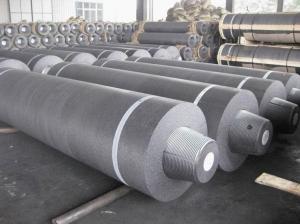When it comes to the world of metallurgy and foundries, there’s one material that’s been the backbone of the industry for decades: graphite electrodes. These cylindrical wonders have been the go-to choice for electric arc furnaces, helping to heat and melt the raw materials into the metal we use in everything from cars to kitchenware. But what’s the story with their prices? That’s the million-dollar question, and it’s one that’s got a lot of people scratching their heads.
Let’s dive into the fascinating world of graphite electrode pricing and try to make some sense of the trends we’ve seen over the years. We’ll also take a wild guess at what the future might hold for these essential components of our industrial processes.
First things first, what exactly are graphite electrodes? They’re made from high-quality, high-purity graphite, which is then shaped into a cylinder. These electrodes are used in electric arc furnaces to generate the intense heat needed to melt down scrap metal and convert it into new, usable metal. It’s a process that’s been around for a long time, but it’s still incredibly relevant today.
Now, let’s talk about the price trends. Over the past few years, we’ve seen some pretty wild fluctuations in the price of graphite electrodes. It’s been a bit like a rollercoaster ride, with prices soaring to new heights one moment, only to plummet back down to Earth the next. There are a few factors that have contributed to these price swings, and understanding them can help us get a better grasp on what the future might hold.
One of the main factors that have influenced the price of graphite electrodes is the supply and demand dynamic. When demand for these electrodes is high, prices tend to go up. Conversely, when demand drops, prices tend to follow suit. This is a pretty basic economic principle, but it’s worth mentioning because it’s had a significant impact on the pricing trends we’ve seen.
Another factor that’s played a role in the pricing of graphite electrodes is the cost of raw materials. High-quality graphite isn’t cheap, and when the cost of this key ingredient goes up, it can have a direct impact on the price of the finished product. Additionally, the cost of energy used in the production process can also affect the price of graphite electrodes.
But it’s not just about supply, demand, and raw materials. There are also geopolitical factors at play. For example, trade restrictions or tariffs can affect the price of graphite electrodes, as can changes in government policies related to the industry. These factors can be unpredictable and can have a significant impact on the market.
So, what does the future hold for graphite electrode prices? It’s hard to say for certain, but there are a few trends that we can look at to make an educated guess.
One trend that stands out is the increasing demand for electric vehicles (EVs). As more and more people switch to electric cars, the demand for the metals used in their batteries is also increasing. This, in turn, could drive up the demand for graphite electrodes, as they’re used in the production of these metals.
Another trend to watch is the push for more sustainable and environmentally friendly production methods. As the world becomes more aware of the need to reduce our carbon footprint, there may be a shift towards using more sustainable materials and processes in the production of graphite electrodes. This could potentially affect the price, as the cost of production may increase.
Of course, there are also the usual suspects of supply and demand, raw material costs, and geopolitical factors that will continue to play a role in shaping the future of graphite electrode prices. It’s a complex interplay of factors, and predicting the future is never an exact science.
In conclusion, the world of graphite electrode pricing is a fascinating one, full of twists and turns. While it’s impossible to predict the future with absolute certainty, by understanding the factors that have shaped the past, we can make some educated guesses about what lies ahead. Whether you’re a metallurgist, a foundry worker, or just someone with a keen interest in the industry, keeping an eye on these trends can help you stay ahead of the curve and make informed decisions about your investments and operations.

